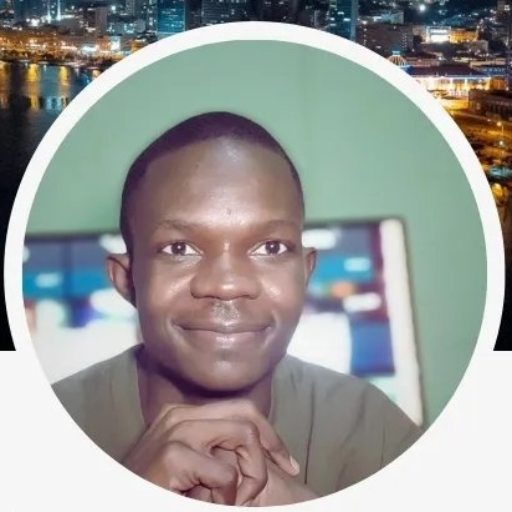On March 22, 2025, I shared a thought-provoking post on X: “Africa needs bridges made out of flesh and bones…”
This metaphor wasn’t just a passing thought—it was a call to action. It reflects on the gaps between Africa’s immense talent, achievements, and aspirations and how we, as individuals, can become the bridges to close those divides. Let’s dive into the essence of this message, explore its implications, and consider how we can actively contribute to this vision of unity and collaboration across the continent.
The Context: Africa’s Achievements and Challenges
Africa is a continent brimming with potential. I’ve often noted that “a ton of amazing things are being done in Africa, and way more things are being thought/planned.” From groundbreaking innovations in technology to transformative leadership in politics, philosophy, and business, Africans have achieved remarkable feats.
Think of Rwanda’s success in achieving over 97% 4G mobile coverage by 2020 through a partnership with South Korea’s KT Corporation. Or consider the ambitious Horizon Europe Africa Initiative, fostering collaboration between Africa and Europe in areas like public health, green transition, and innovation.
Yet, despite these strides, I see a critical issue: there seems to be a “chasm” between the groups of people driving these achievements. Whether it’s the digital divide—where 53% of Africans lived within a mobile broadband network but weren’t using it in 2020—or the disconnect between leaders in different sectors, these gaps hinder collective progress. Africa’s challenges—ranging from affordability barriers in digital access to the need for stronger collaboration in research and innovation—require more than isolated efforts. They demand bridges.
The Metaphor: Bridges of Flesh and Bones
When I said, “Africa needs bridges made out of flesh and bones…”, I wasn’t just speaking poetically. This phrase carries deep symbolic meaning. In Christian tradition, “flesh and bone” signifies humanity’s tangible, physical reality—Jesus’ resurrection in an actual body, not just a spirit. Similarly, I use this phrase to emphasize the need for real, human connections to bridge Africa’s divides. These aren’t bridges of steel or concrete but ones built from our lived experiences, relationships, and collaborative efforts.
Bridges symbolize transition, change, and connection. They embody new beginnings, overcoming obstacles, and uniting disparate groups. In literature, bridges often mark a character’s journey from one stage of life to another, representing hope and possibility. My call for “bridges made out of flesh and bones” aligns with this symbolism—I urge Africans to see themselves as the connectors, the living links between the continent’s innovators, leaders, and dreamers.
The Question: What Is Missing?
The answer? Bridges.
But what does that mean in practical terms? It means raising our situational awareness and recognizing that “we are the bridges we need.” This is a call to action for Africans to take responsibility for fostering connections, whether through collaboration, mentorship, or shared initiatives. It’s about understanding the broader context of Africa’s challenges and opportunities and actively working to link the incredible people already making a difference.
For example, the Horizon Europe Africa Initiative underscores the importance of collaboration in addressing public health and biodiversity. But such initiatives can only succeed if there are human bridges—individuals and communities—facilitating the exchange of ideas, resources, and expertise. Similarly, closing Africa’s digital divide requires more than infrastructure. It requires people advocating for affordability, educating others on digital literacy, and creating opportunities for those who remain unconnected.
How Do We Build These Bridges?
Building bridges of flesh and bones starts with us. Here’s how:
1. Foster Collaboration Across Sectors
Africa’s leaders in business, politics, technology, and philosophy often operate in silos. We can bridge these gaps by creating platforms for dialogue, whether through conferences, online communities, or mentorship programs. Imagine a tech innovator in Nairobi collaborating with a policy expert in Accra to address digital affordability. Or a philosopher in Cairo partnering with a health researcher in Johannesburg to tackle public health challenges.
2. Raise Situational Awareness
We need to understand the broader context of Africa’s challenges and opportunities. For instance, knowing that the cost of a basic internet-enabled device is over 120% of monthly income for the poorest 20% of Africans should push us to advocate for solutions like subsidized devices or community internet hubs.
3. Be the Link
Each of us can act as a connector. Share knowledge, introduce people, and amplify the work of others. If you know a young entrepreneur with a brilliant idea, connect them to a mentor. If you’re part of a research initiative, reach out to policymakers to ensure your findings influence real change. We are the links between incredible people.
4. Embrace the Power of Storytelling
Bridges in literature symbolize emotional and physical journeys. We can use storytelling to inspire and unite. Share African success stories—whether it’s a startup in Lagos or a community project in rural Malawi—to motivate others and highlight the potential for collaboration.
A Vision for the Future
My message is more than a metaphor; it’s a vision for Africa’s future. By becoming bridges of flesh and bones, we can unite the continent’s talent, ideas, and aspirations to create a stronger, more connected Africa. This vision aligns with broader efforts like the Horizon Europe Africa Initiative and the push to close the digital divide.
As we move forward, let’s take these words to heart: “We are the bridges we need.” Let’s build those connections, not with steel or stone, but with our shared humanity—our flesh and bones. Together, we can turn Africa’s potential into action, its challenges into opportunities, and its divides into pathways for progress.




Leave a Reply